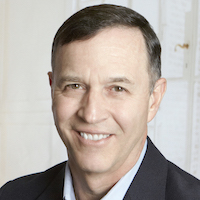What if the best minds of the world got together to generate the optimum requirements specification for human co-habitation? And built it into one large decision matrix to run on the best super-computers?
Decisions would be made solely on objective criteria; no mental arbitration, no skipping steps, no checking with “Bob” to see what he thinks, no “close enough”… something either “is” or it “is not”.
Will this ever come to pass? Even if possible, it is probably many human generations in the future. But I think computerized machines and robots will continue to be an increasing influence in our lives and our world.
There are plenty of examples to support this:
- Computerized robots can go into dangerous situations or hazardous areas where a human may suffer injury or death.
- Robotic equipment is now used to help people move and walk, and robotic surgical techniques have become more common. Life support and diagnostic equipment has been around for a while.
- Computers are always “on” and always paying attention. Of course, they may need a ‘proof-test-nap’ from time to time to make sure they’re still on top of things.
- Computers can take large amounts of data, perform algorithmic calculations, and provide results very quickly. Your internet browsers are keeping track of your searches and optimally presenting special offers of interest just for you.
- Your car is essentially a huge multi-processor computer with a driver’s seat; consider the collision avoidance, self-parking and self-driving features that exist today.
Development of mission critical computer equipment requires a process that aims to avoid and control dangerous failures. Not every machine will be mission critical to the human co-habitation specification, but in those in critical application areas special attention will be needed to prevent dangerous failures and accidents. Will the decisions always be correct? Maybe not in every case, but that will not always be the machine’s fault; often it will be due to human error, and often due to errors in the requirements specification itself. Oh, a certain percentage of failure will be due to random faults, but the systematic faults will dominate.
Sometimes we lose sight of how our product development activities have far-reaching effects in the real world. But if your life depended on the product you were developing, you’d probably spend some extra effort to make sure that product really worked as intended. And you’d probably be looking over your shoulder to see that your colleagues were as least as diligent as you. A computerized machine will only be as safe as the process used to create it.
For those who remember the ill-fated space mission of “Lost In Space”…
Danger, Will Robinson! There is a Dr. Smith lurking nearby.
Tagged as: software John Yozallinas

